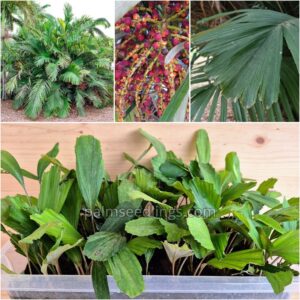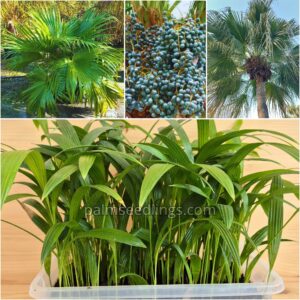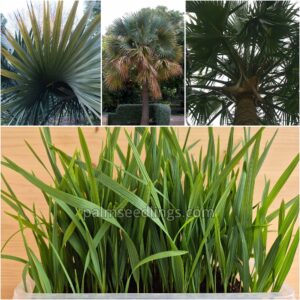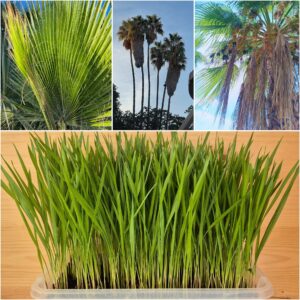Menu
16,00 € – 120,00 €
Chamaerops humilis var. cerifera, commonly known as the Moroccan European Fan Palm, is a unique variety of the Chamaerops humilis species prized for its cold tolerance, compact growth habit, and distinctive blue color. Native to North Africa, particularly Morocco, this palm variety is well-suited to Mediterranean and subtropical climates.
Chamaerops humilis var. cerifera (Moroccan European Fan Palm)
Habitat:
The Moroccan European Fan Palm thrives in Mediterranean climates, where it is found in rocky hillsides, coastal areas, and scrublands. It is native to North Africa, including regions of Morocco, Algeria, and Tunisia. This palm is also cultivated in gardens and landscapes worldwide for its ornamental value and adaptability to diverse growing conditions.
Outstanding Features:
The most outstanding feature of the Moroccan European Fan Palm is its cold hardiness, making it suitable for regions with cooler temperatures. It typically forms multiple trunks, giving it a clustering growth habit. The leaves are fan-shaped and deeply divided, with a bluish coloration. The overall appearance is compact and attractive, making it a desirable addition to gardens and landscapes.
General Appearance:
Moroccan European Fan Palms typically grow to heights of 6 to 10 feet, with a spread of 4 to 8 feet. The trunk(s) are relatively short and covered with persistent leaf bases, adding to the palm’s rugged appearance. The crown is comprised of numerous fan-shaped leaves arranged in a circular fashion, creating a symmetrical and dense canopy.
Applications:
Moroccan European Fan Palms are highly valued for their ornamental beauty and are commonly used in gardens, parks, and landscapes. They are suitable for both residential and commercial landscapes, where they add a touch of elegance and tropical flair. Their cold tolerance makes them ideal for regions with cooler temperatures, where other palm species may struggle to thrive.
Adaptability:
Moroccan European Fan Palms are adaptable to a variety of growing conditions and are relatively low-maintenance once established. They prefer well-drained soils and full sun but can tolerate partial shade. These palms are drought-tolerant once established and are resistant to pests and diseases, making them an ideal choice for landscapes with limited water resources. Their cold tolerance, compact size, and attractive foliage make them a popular choice for gardens and landscapes in Mediterranean and subtropical regions.
| Weight | N/A |
|---|---|
| Quantity | 10 Seedlings, 100 Seedlings, 500 Seedlings |




All rights reserved PalmseedlingsⓇ 2025.